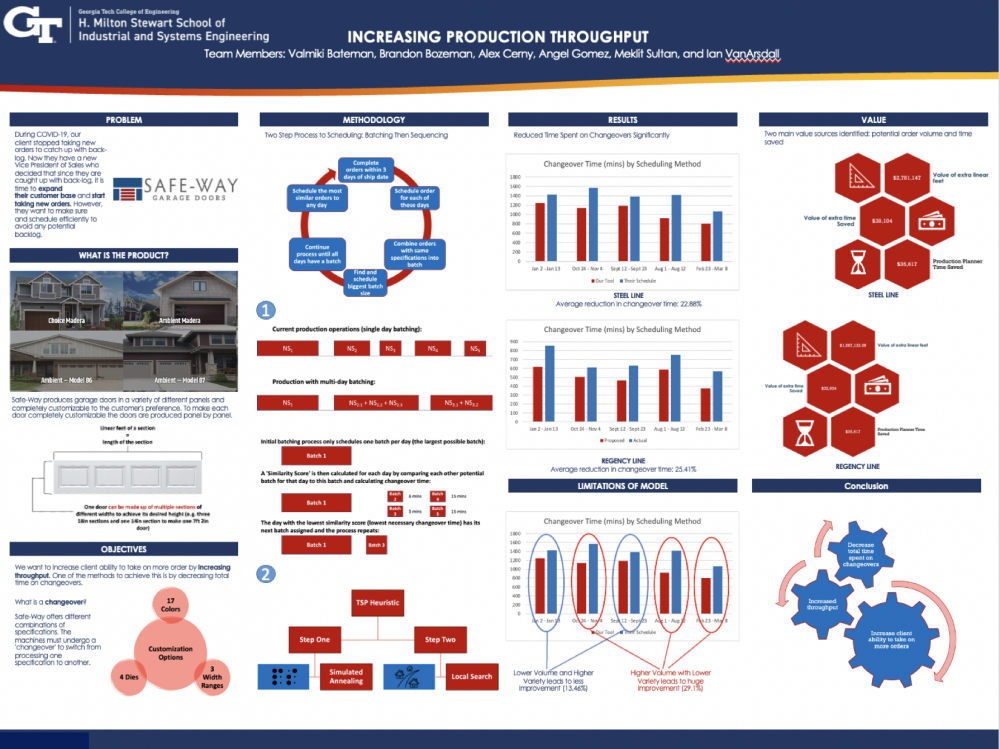Client Context
Safe-Way is a garage door manufacturer. The client wants to increase their sales and to do so, they need to be able to process more garage door sections1 per shift than is currently possible. This means they want to increase their production capacity. Currently it takes a full 8-hour shift (including breaks) to produce at current linear feet capacity of garage door sections per line. On average, the 8 hours consists of 1 hour break time, 2.96 hours of processing/assembly line uptime, and most notably, 4.04 hours of changeover time. Since Safe- Way's production lines are continuous, interruptions such as changeovers bring the lines to a halt.
Project Objective
Safe-Way's production rate has been lower than desired. Their current method is scheduling orders per Earliest Due Date (EDD), which involves manufacturing orders one day prior to the load date. An area for opportunity is to increase production by extending the scheduling window to three days before the load date in order to batch similar orders together which can reduce changeovers. Sending larger volumes of orders each day from weekly batching led to the decision of decreasing total changeover times that stop otherwise continuous flow lines.
Downtime from changeovers is spent switching out color, die and width of sections. For instance, changing the color of a coil from white to bronze takes 6 minutes on average. Because of this, batching orders on a given day over the scheduled time frame can lead to a significant reduction in total changeover time over both lines and a larger percentage of productive time. This allows Safe-Way to take on a greater volume of orders by meeting capacity more often.
Design Strategy
The design strategy for this project consists of three steps: Identify all constraints, create a heuristics model for weekly batching, and implement our model by having it pull data from Safe-Way's ERP system.
Deliverables
Three main deliverables: the heuristic-based scheduling tool (written in python), Excel interfaces for the client to interact with the tool (allowing inputs to be provided in Excel and outputs to be displayed in Excel), and finally a comprehensive instruction manual that outlines how to use both the Excel interfaces and the tool itself. The tool was made to have all the constraints be changeable, so the instruction manual is especially important to allow the client to easily adjust the tool in the future should the production environment change.
Value and Impact
The tool results in an average reduction of time spent doing changeovers of 22.88% on the Steel Line and 25.44% on the Regency Line. This would allow for an increase in throughput of 914.25 linear feet on the Steel Line, and 521.74 linear feet on the Regency Line. This can be quantified in two ways, either the time saved by doing the same amount of production in less time, or in the value of the potential extra linear feet produced should the lines operate at their new capacity. The value of the time saved would total at $107,325.40 and the value of the extra capacity across both lines would total $4,368,280.08.


